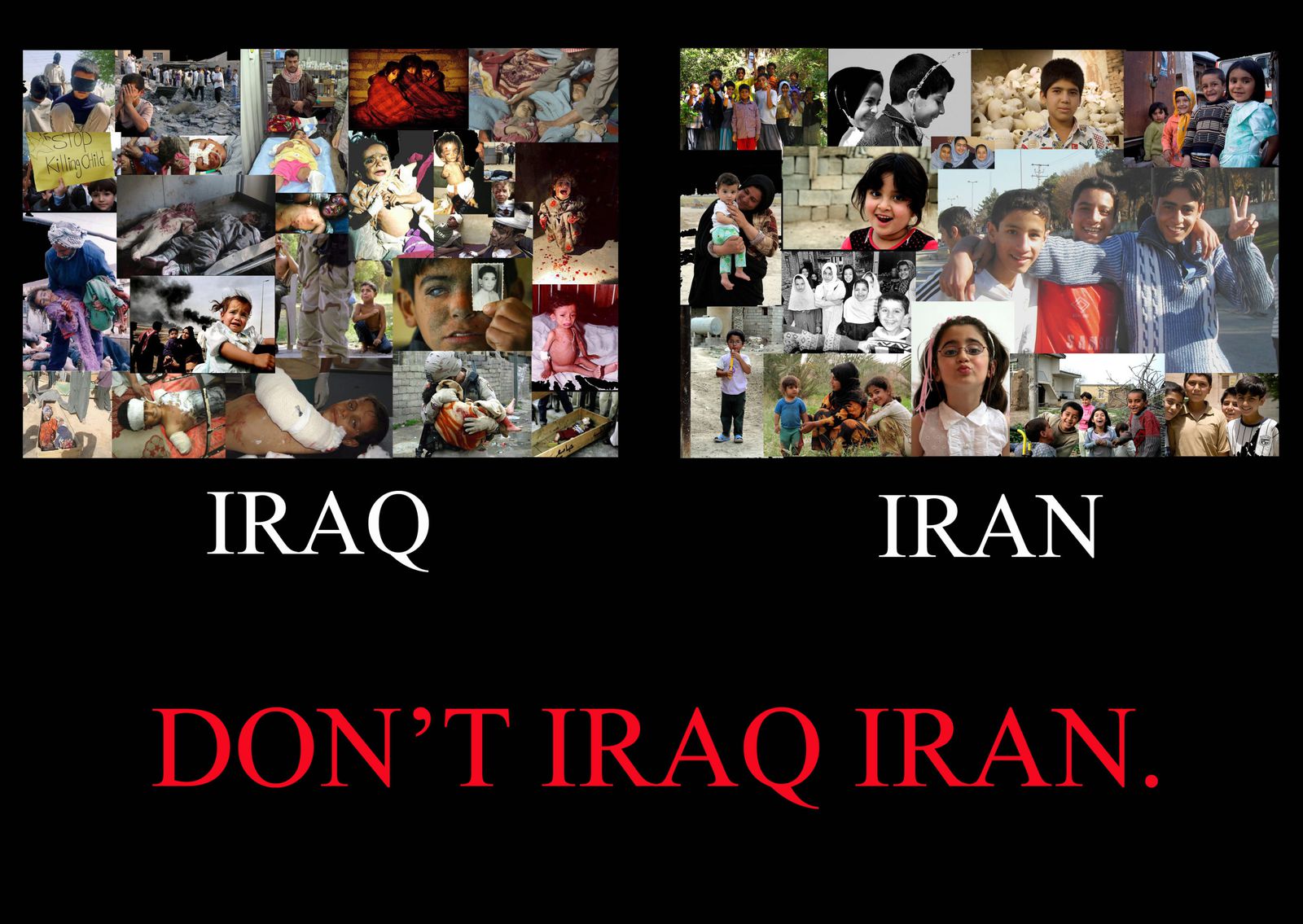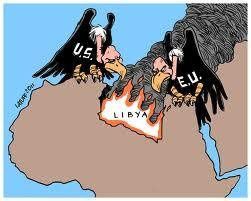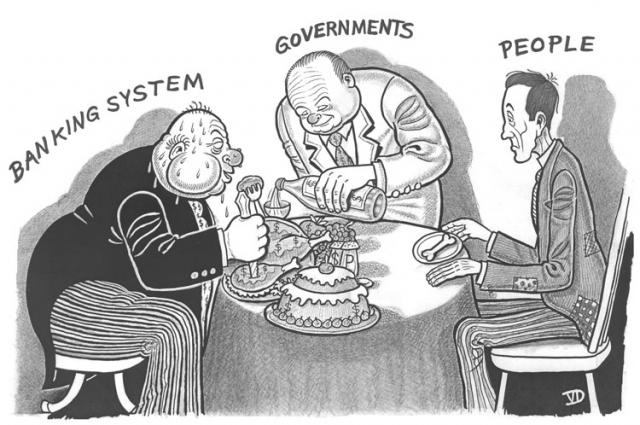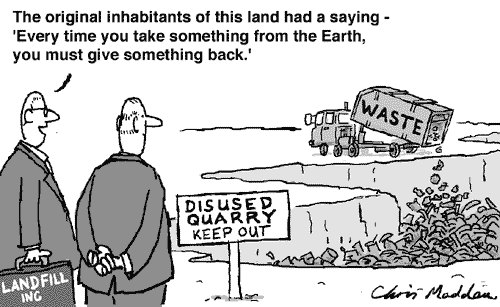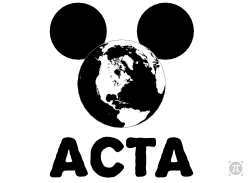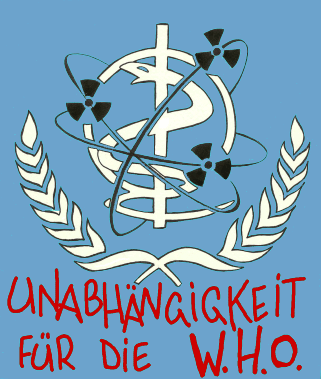It has been called the world's second "oil war", but the only similarity between Iraq and events in the jungles of northern Peru over the last few weeks has been the mismatch of force. On one side have been the police armed with automatic weapons, teargas, helicopter gunships and armoured cars. On the other are several thousand Awajun and Wambis Indians, many of them in war paint and armed with bows and arrows and spears.
![peruvians.jpg [Natives set up a road block at the entrance of the Amazonian town of Yurimaguas, northern Peru. "For thousands of years, we've run the Amazon forests," said Servando Puerta, one of the protest leaders. "This is genocide. They're killing us for defending our lives, our sovereignty, human dignity." (AFP/Ernesto Benavides)]](http://www.commondreams.org/files/article_images/peruvians.jpg)
Natives set up a road block at the entrance of the Amazonian town of Yurimaguas, northern Peru. "For thousands of years, we've run the Amazon forests," said Servando Puerta, one of the protest leaders. "This is genocide. They're killing us for defending our lives, our sovereignty, human dignity." (AFP/Ernesto Benavides)
In some of the worst violence seen in Peru in 20 years, the Indians this week warned Latin America what could happen if companies are given free access to the Amazonian forests to exploit an estimated 6bn barrels of oil and take as much timber they like. After months of peaceful protests, the police were ordered to use force to remove a road bock near Bagua Grande. In the fights that followed, at least 50 Indians and nine police officers were killed, with hundreds more wounded or arrested. The indigenous rights group Survival International described it as "Peru's Tiananmen Square".
"For thousands of years, we've run the Amazon forests," said Servando Puerta, one of the protest leaders. "This is genocide. They're killing us for defending our lives, our sovereignty, human dignity."
Yesterday, as riot police broke up more demonstrations in Lima and a curfew was imposed on many Peruvian Amazonian towns, President Garcia backed down in the face of condemnation of the massacre. He suspended – but only for three months – the laws that would allow the forest to be exploited. No one doubts the clashes will continue.
Peru is just one of many countries now in open conflict with its indigenous people over natural resources. Barely reported in the international press, there have been major protests around mines, oil, logging and mineral exploitation in Africa, Latin America, Asia and North America. Hydro electric dams, biofuel plantations as well as coal, copper, gold and bauxite mines are all at the centre of major land rights disputes.
A massive military force continued this week to raid communities opposed to oil companies' presence on the Niger delta. The delta, which provides 90% of Nigeria's foreign earnings, has always been volatile, but guns have flooded in and security has deteriorated. In the last month a military taskforce has been sent in and helicopter gunships have shelled villages suspected of harbouring militia. Thousands of people have fled. Activists from the Movement for the Emancipation of the Niger Delta have responded by killing 12 soldiers and this week set fire to a Chevron oil facility. Yesterday seven more civilians were shot by the military.
The escalation of violence came in the week that Shell agreed to pay £9.7m to ethnic Ogoni families – whose homeland is in the delta – who had led a peaceful uprising against it and other oil companies in the 1990s, and who had taken the company to court in New York accusing it of complicity in writer Ken Saro-Wiwa's execution in 1995.
Meanwhile in West Papua, Indonesian forces protecting some of the world's largest mines have been accused of human rights violations. Hundreds of tribesmen have been killed in the last few years in clashes between the army and people with bows and arrows.
"An aggressive drive is taking place to extract the last remaining resources from indigenous territories," says Victoria Tauli-Corpus, an indigenous Filipino and chair of the UN permanent forum on indigenous issues. "There is a crisis of human rights. There are more and more arrests, killings and abuses.
"This is happening in Russia, Canada, the Philippines, Cambodia, Mongolia, Nigeria, the Amazon, all over Latin America, Papua New Guinea and Africa. It is global. We are seeing a human rights emergency. A battle is taking place for natural resources everywhere. Much of the world's natural capital – oil, gas, timber, minerals – lies on or beneath lands occupied by indigenous people," says Tauli-Corpus.
What until quite recently were isolated incidents of indigenous peoples in conflict with states and corporations are now becoming common as government-backed companies move deeper on to lands long ignored as unproductive or wild. As countries and the World Bank increase spending on major infrastructural projects to counter the economic crisis, the conflicts are expected to grow.
Indigenous groups say that large-scale mining is the most damaging. When new laws opened the Philippines up to international mining 10 years ago, companies flooded in and wreaked havoc in indigenous communities, says MP Clare Short, former UK international development secretary and now chair of the UK-based Working Group on Mining in the Philippines
.
Short visited people affected by mining there in 2007: "I have never seen anything so systematically destructive. The environmental effects are catastrophic as are the effects on people's livelihoods. They take the tops off mountains, which are holy, they destroy the water sources and make it impossible to farm," she said.
In a report published earlier this year, the group said: "Mining generates or exacerbates corruption, fuels armed conflicts, increases militarisation and human rights abuses, including extrajudicial killings."
The arrival of dams, mining or oil spells cultural death for communities. The Dongria Kondh in Orissa, eastern India, are certain that their way of life will be destroyed when British FTSE 100 company Vedanta shortly starts to legally exploit their sacred Nyamgiri mountain for bauxite, the raw material for aluminium. The huge open cast mine will destroy a vast swath of untouched forest, and will reduce the mountain to an industrial wasteland. More than 60 villages will be affected.
"If Vedanta mines our mountain, the water will dry up. In the forest there are tigers, bears, monkeys. Where will they go? We have been living here for generations. Why should we leave?" asks Kumbradi, a tribesman. "We live here for Nyamgiri, for its trees and leaves and all that is here."
Davi Yanomami , a shaman of the Yanomami, one of the largest but most isolated Brazilian indigenous groups, came to London this week to warn MPs that the Amazonian forests were being destroyed, and to appeal for help to prevent his tribe being wiped out.
"History is repeating itself", he told the MPs. "Twenty years ago many thousand gold miners flooded into Yanomami land and one in five of us died from the diseases and violence they brought. We were in danger of being exterminated then, but people in Europe persuaded the Brazilian government to act and they were removed.
"But now 3,000 more miners and ranchers have come back. More are coming. They are bringing in guns, rafts, machines, and destroying and polluting rivers. People are being killed. They are opening up and expanding old airstrips. They are flooding into Yanomami land. We need your help.
"Governments must treat us with respect. This creates great suffering. We kill nothing, we live on the land, we never rob nature. Yet governments always want more. We are warning the world that our people will die."
According to Victor Menotti, director of the California-based International Forum on Globalisation, "This is a paradigm war taking place from the arctic to tropical forests. Wherever you find indigenous peoples you will find resource conflicts. It is a battle between the industrial and indigenous world views."
There is some hope, says Tauli-Corpus. "Indigenous peoples are now much more aware of their rights. They are challenging the companies and governments at every point."
In Ecuador, Chevron may be fined billions of dollars in the next few months if an epic court case goes against them. The company is accused of dumping, in the 1970s and 1980s, more than 19bn gallons of toxic waste and millions of gallons of crude oil into waste pits in the forests, leading to more than 1,400 cancer deaths and devastation of indigenous communities. The pits are said to be still there, mixing chemicals with groundwater and killing fish and wildlife.
The Ecuadorian courts have set damages at $27bn (£16.5bn). Chevron, which inherited the case when it bought Texaco, does not deny the original spills, but says the damage was cleaned up.
Back in the Niger delta, Shell was ordered to pay $1.5bn to the Ijaw people in 2006 – though the company has so far escaped paying the fines. After settling with Ogoni families in New York this week, it now faces a second class action suit in New York over alleged human rights abuses, and a further case in Holland brought by Niger Delta villagers working with Dutch groups.
Meanwhile, Exxon Mobil is being sued by Indonesian indigenous villagers who claim their guards committed human rights violations, and there are dozens of outstanding cases against other companies operating in the Niger Delta.
"Indigenous groups are using the courts more but there is still collusion at the highest levels in court systems to ignore land rights when they conflict with economic opportunities," says Larry Birns, director of the Council on Hemispheric Affairs in Washington. "Everything is for sale, including the Indians' rights. Governments often do not recognise land titles of Indians and the big landowners just take the land."
Indigenous leaders want an immediate cessation to mining on their lands. Last month, a conference on mining and indigenous peoples in Manila called on governments to appoint an ombudsman or an international court system to handle indigenous peoples' complaints.
"Most indigenous peoples barely have resources to ensure their basic survival, much less to bring their cases to court. Members of the judiciary in many countries are bribed by corporations and are threatened or killed if they rule in favour of indigenous peoples.
"States have an obligation to provide them with better access to justice and maintain an independent judiciary," said the declaration.
But as the complaints grow, so does the chance that peaceful protests will grow into intractable conflicts as they have in Nigeria, West Papua and now Peru. "There is a massive resistance movement growing," says Clare Short. "But the danger is that as it grows, so does the violence."
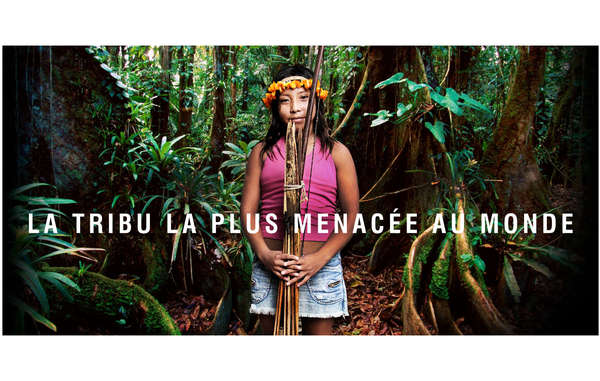
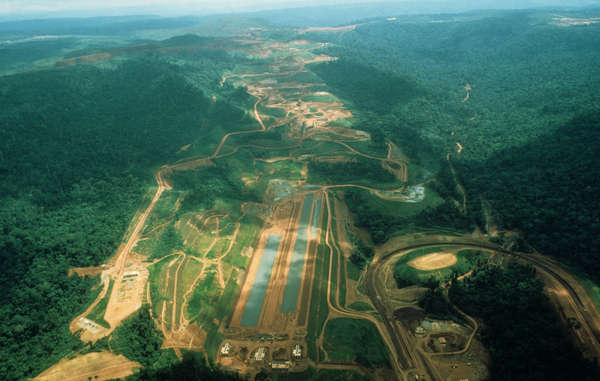






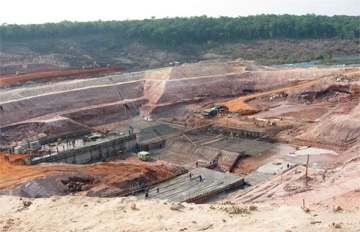



![peruvians.jpg [Natives set up a road block at the entrance of the Amazonian town of Yurimaguas, northern Peru. "For thousands of years, we've run the Amazon forests," said Servando Puerta, one of the protest leaders. "This is genocide. They're killing us for defending our lives, our sovereignty, human dignity." (AFP/Ernesto Benavides)]](http://www.commondreams.org/files/article_images/peruvians.jpg)
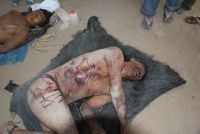

![Géopolitique : Union transatlantique, la grande menace, par Alain De Benoist [tribune libre] Géopolitique : Union transatlantique, la grande menace, par Alain De Benoist [tribune libre]](http://www.breizh-info.com/wp-content/uploads/2014/06/tafta.jpg)


